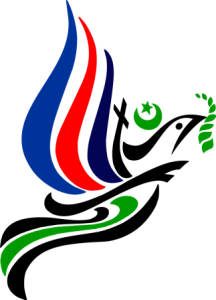

The protracted record of violence, economic neglect and separation has kept Mindanao from the mainstreams of developments and have posed a long-lasting challenge for peace workers in the Southern Philippines. As a local response to this challenge, the Week of Peace was hatched up in 1997 in Zamboanga City through a collaboration of Christian and Muslim peace partners led by Peace Advocates Zamboanga (PAZ) and SALAM Foundation. Reflective of the Muslim-Christian collaboration at the heart of the initiative, even the Week’s celebration in November to December was meant to reflect the unity of the Muslim Ramadan and Christian Advent seasons.
Call to Peace
The Week of Peace has since transcended its Zamboanga roots and snowballed to the Mindanao and even national levels. The 1999 “Call to Peace” issued by the Mindanao Bishops-Ulama Forum provided the impetus for its expansion and sustainability. The Week has been so significant that its observation has been pronounced and perpetuated by a series of three proclamations by two Philippine Head of state. In 1999, President Joseph Ejercito Estrada issued Presidential Proclamation (PP) No. 207 “Declaring the period from November 25 to December 1, 2000, and every year thereafter as the “Mindanao Week of Peace”. In November 2000 he amended PP 207 and issued Presidential Proclamation 408 “Amending Proclamation No. 207, S. 1997, by Resetting the Date of the Mindanao Week of Peace to the last Thursday of November up to the First Wednesday of December every year Thereafter”. In 2001, that proclamation was superseded by PP 207 issued by then President Gloria Macapagal-Arroyo, reiterating the declaration of the Mindanao Week of Peace as the “last Thursday of November up to the First Wednesday of December of every year thereafter”.
Loaves and Fishes
The provisions for the observance of the Week have reflected the miracle of the “loaves and fishes”, with the participating partners growing with each annual observance. Conceiving a modest small-town step of faith in 1997, the Week’s organizers were faced with a meagre budget, simply relying on creative accounting and the goodwill of benevolent partners. Yet how that maiden week turned out to be a smashing success will be attributed to serendipity.
A few months prior to the Week’s schedule, a guest came passing through. She was Fionnuala Gilsenan, the Asia Project Officer of Trocaire, the Official overseas development agency of the Catholic Church in Ireland. Fionnuala had travelled elsewhere in Mindanao, including Pagadian City, connecting with the Irish Columban Sisters, and was going to exit in Zamboanga City enroute to Timor. A system of referrals, a friend-to-friend contact, led to a two-hour conversation over lunch. The happy result of that meeting was the much-needed financial “shot in the arm” that tremendously boosted the activities of the Week. That single moment was inspirational and marked the Week’s magnificent tradition. Wishing to perpetuate the Week as a constant reminder of the need for peace, a massive diversity of groups and individuals have come together every year, fully convinced that the madness of a culture of violence, injustice, and destruction must stop.
For over twenty years, the celebration of the Week of Peace has been led by the following objectives
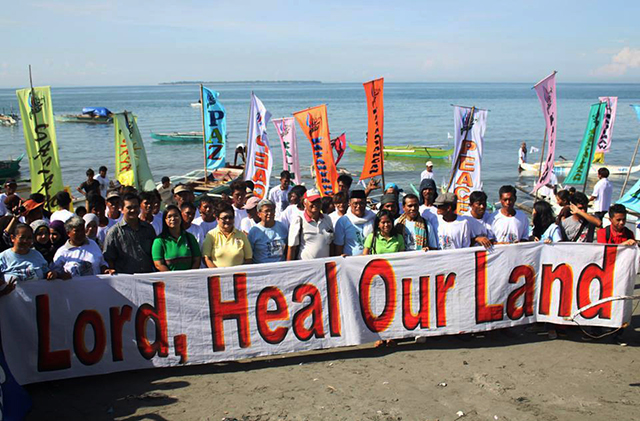
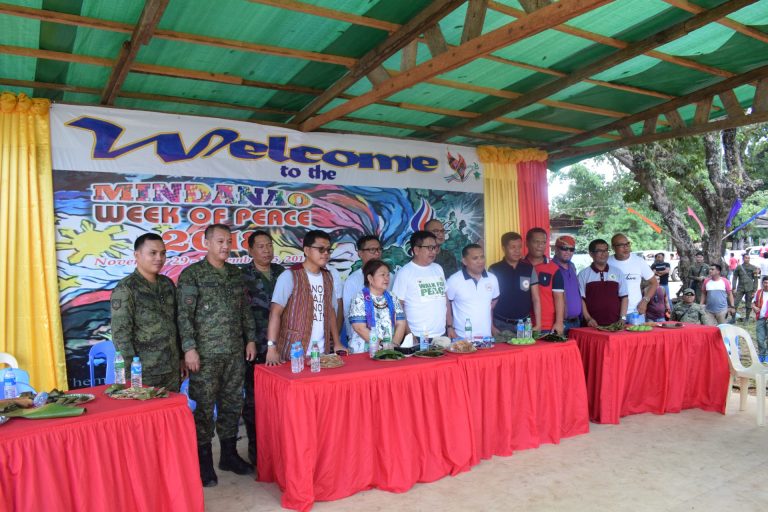
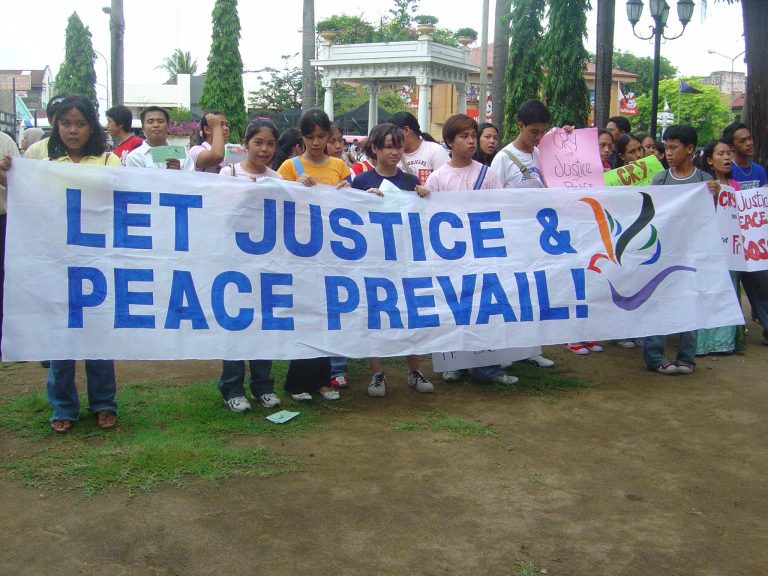
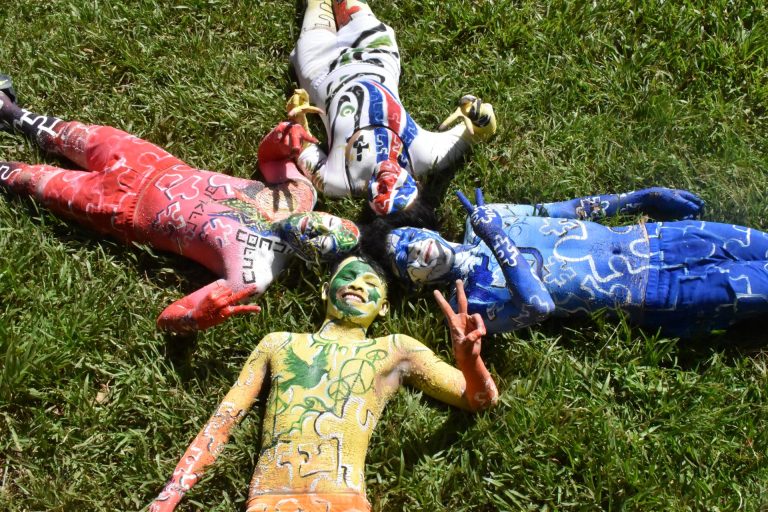
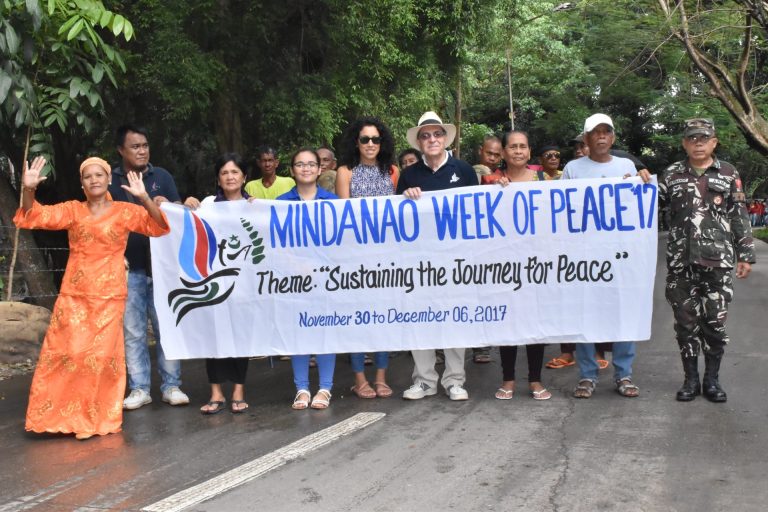
The ethos of every year’s celebration was prescribed by themes. On the whole, the week’s emphasis over the years has been expressed in different ways mainly as messages of solidarity, healing and reconciliation. While the week was meant to be a National observance, it cast a spotlight on Mindanao, drawing attention to the super regions neglect and record of war, foremost among other conflict-stricken areas in the country. Hence, some themes articulated that focus more explicitly (2000, 2002, 2009, 2012). At times the themes were directed toward particular sectors like the family (2004), the youth (2005), and peace officers (2007); or causes like responsible governance (2010) or care for the environment (2006).
The push for healing and social cohesion became most urgent during the years that immediately followed the Zamboanga Siege i.e., 2013 to 2016. For the year 2017, the theme was a reiteration of the call for peace in view of the Marawi City atrocities. In 2018, the theme continues to spark the agenda of peace and hope. It gives space to a more comprehensive treatment of the preconditions and processes of peace- Human Security. To give a sense of the Week’s thematic direction over the two decades of its celebration, it is useful to enumerate these yearly themes, as follows
1997
1998
1999
2000
2001
2002
2003
2004
2005
2006
2007
2008
2009
2010
2011
2012
2013
2014
2015
2016
2017
2018
2019
2020
It has been the distinct honor of ZABIDA, together with its partners in the Interreligious Solidarity for Peace (Peace Advocates Zamboanga Foundation, Golden Crescent Consortium of Peace Builders and Affiliates Inc., the Zamboanga Ministers Fellowship and the Indigenous Peoples Representatives) to have enjoyed PEOPLE’S support throughout the many years of implementing our respective programs. Among these is the Week of Peace Project which began in our City through the initiative of a multi-sectoral and multi-religious group of local stakeholders, we included.
For the longest time that you have showed support in the week-long celebration that falls every last Thursday of November up to the first Wednesday of December every year, we are more than grateful that you remain committed to make the celebration a part of your institutions programs every year.
The Proposed Theme of the Interreligious Solidarity for Peace is “PEACE: Compassion & Justice, Resilience and Healing for All” pending the release of the Official Theme from the Bishops-Ulama Conference.
We are off to the second year of our Week of Peace celebration under the circumstances of the COVID 19 Pandemic. It continues to be a trying time, but the imperatives of living make us conscious that, pandemic or no pandemic, the best results of our efforts for peace must be delivered.
The theme this year reflects a reiteration for things we seem to have lost because of the contingencies we have had to conduct in response to the emergencies of the time. Our definition of peace is laid out by the compassion and justice that our vulnerable communities especially deserve, and resilience and healing for us all – inclusively. We lay out the agenda for HEALING, showing that these concerns have always been there, but all the more now.
Is there hope for HEALING in the midst of these challenges? Our call for PEACE is a constant reminder that we shall not stand aside, but emerge from the fog of despair and inaction. Yes, we shall talk about our issues, discern the good in true leaders, but more importantly, vigorously campaign for that good to be expressed.
PEACE: Compassion & Justice, Resilience and Healing for All
Of the many programs we have spearheaded and collaborated with your support includes the passage and approval of the Ordinance No. 552 S. 2021 entitled “ An Ordinance declaring the last Thursday of November up to the first Wednesday of December of every year thereafter as the Zamboanga Week of Peace and appropriating Funds thereof” and such ordinance shall be known as “THE ZAMBOANGA WEEK OF PEACE”, a milestone from us for the meaningful journey of the conduct of the Mindanao Week of Peace Celebration since 1997.
In reference to the said ordinance, as we form part of the committee for the local observance of the Zamboanga Week of Peace,
We affirm your commitment by thanking you and all members of the Local Government Unit including all its branches, instrumentalities, departments and other partner institution / organization / agency for the yearly observance of the Mindanao Week of Peace Celebration
This 2021, amidst the challenges of the Pandemic and Covid19, we wish to make the celebration practical, simple, meaningful and effective one with your institution/organization/agency involved.
After hosting series of meaningful conversations in bringing about a collective response to make the celebration of the week of peace engaging with partner institutions also hosting local peace initiatives, the following are the proposed Activities to be integrated in the said observance.
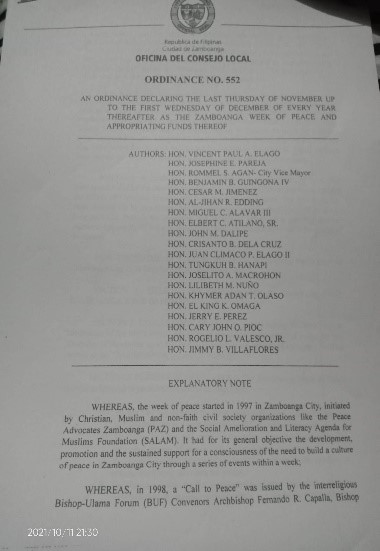
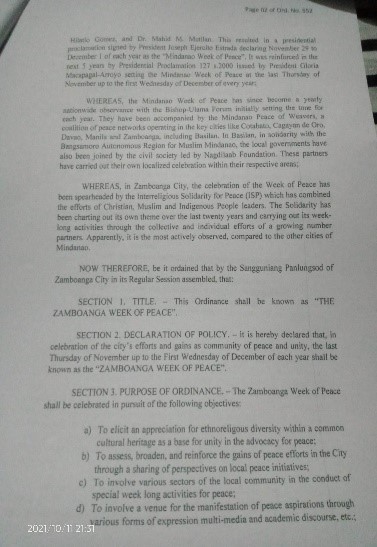
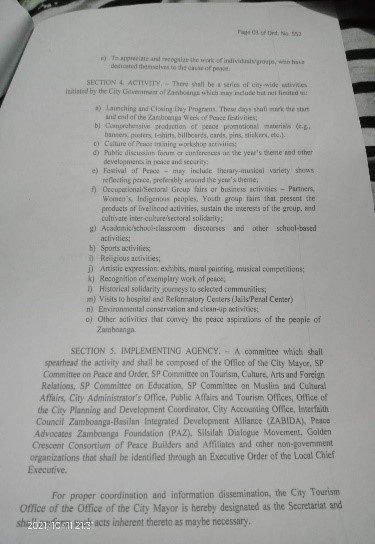
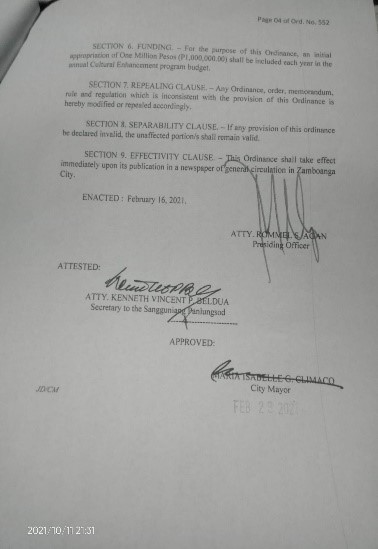
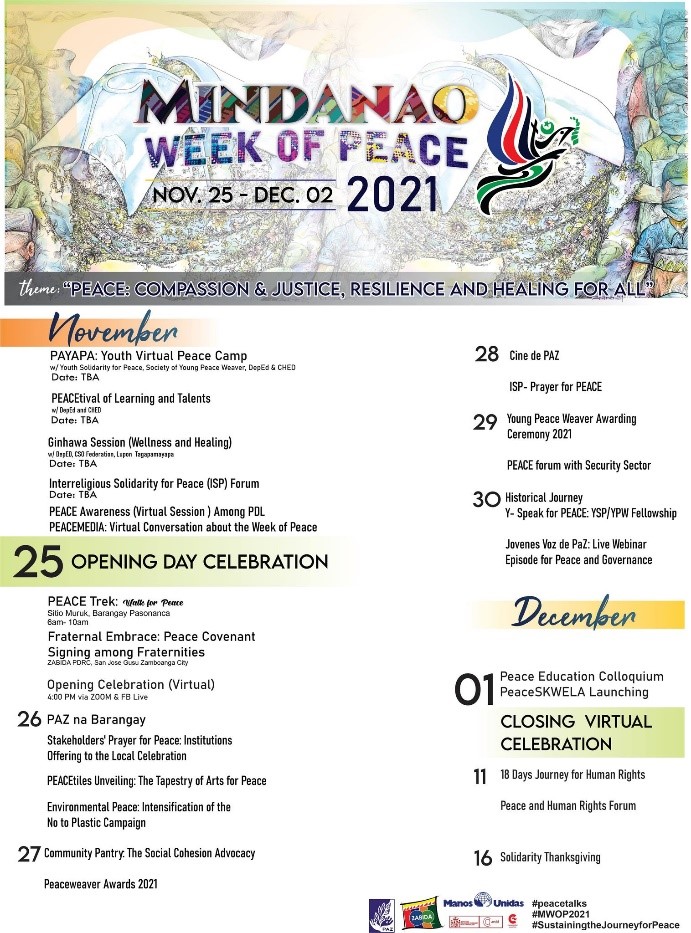
In reference to Section 4- Activity of Ordinance No. 552, there shall be a series of city-wide activities initiated by the city government of Zamboanga which may include but are not limited to